When last I wrote, it was about Antwerp - longer ago than I’d like to admit. When I wrote that letter, I didn’t expect that I would be able to wish you a Merry Christmas in my next letter but here we are. Oh, how time flies.
Before I start to tell you about my stay in Brussels, I want to take a moment to send you my best wishes for a wonderful holiday season. I hope it is filled - in the words of Freya Stark - with the best in human nature: goodness and courtesy, and the happiness that the love of immaterial things can bring.
And smooth travels. Of course smooth travels.
Which brings me to Brussels, and the two-word phrase that can strike fear in the heart of the European traveler like almost no other…
{Brussels, Belgium}
TRAIN STRIKE.
I’d been warned that this can happen at any time, but of course it always happens at the worst time, doesn’t it? This is my last day in Brussels, and I’m supposed to be catching a train to Luxembourg first thing in the morning - a one-day stop-over on the way to southern France. Instead, though, I have spent the morning with all variety of customer service agents, trying to figure out any way at all of getting a train to France today. I’ve given up on Luxembourg - the strikes are taking place in Belgium AND Luxembourg, but not France - and at this point am just hoping to get over the French border so that I can make my way south.
After a stressful morning, I get lucky and a very generous railway conductor lets me hop on his already packed-to-the-gills train without an official ticket. As long as I don’t mind standing in the tiny hallway outside of the bathroom for the journey, I will make it to Paris. (And yes, in case you had any delusions that this was a glamorous trip, this should dispel those thoughts - I spent the entire journey from Brussels to Paris packed into a tiny little space outside of the train’s fragrant bathroom, perched on top of my suitcase with a handful of other desperate passengers.)
However, after an easy transfer in Paris, I am officially on my way south. With time to kill on the train ride, I have a chance to write down my thoughts about Brussels - the city I’ve just barely escaped.
I got up bright and early this morning to take a photo of the sun rising over the Grand-Place, because for the first three days I was here an annual jazz festival had filled the square with not only a specially constructed stage and lots of equipment, but huge crowds. The square is gorgeous this morning, with just scattered groups of tourists and early-riser Belgians getting ready for the day…but I wouldn’t have missed seeing it teeming with people over the weekend, the beating heart of the community, just like similar market squares all over Europe have been for centuries.
Brussels, of course, is both politically and geographically the center of Belgium - and the center of Brussels is the Grand-Place. The square is dominated on one side by the spired, 15th-century city hall and on the other by the King’s House, built a hundred years later. The King’s House was built to house the offices of the Duke of Brabant, and his grand residence stands on a third side of the square. (It is one of Duke’s staircases that I climb to get my picture…I don’t think he’d mind.)
But it is the towering, slim houses that fill up the spaces between these grand civic buildings that really catch my eye. They are similar to the buildings that line the Grote Markt in Antwerp, except that they are grander, and more numerous, with extensive gold detailing that glimmers in the sun.
There are 39 houses that line the Grand-Place. Most of them are the homes of the city’s guilds - guildhalls - but a few of them were built as private residences. Each of the houses has a name: “The Golden Tree”, “The Small Fox”, “The Donkey”, “The Swan”, “The She-Wolf” and so on. As I walk the perimeter of the square, taking in the architectural details I notice a small plaque that says that the French author Victor Hugo lived in “The Pigeon” during his time in Brussels.
It is looking up at the architectural details during this walk that I notice that the dates on the guildhalls’ facades are all remarkably similar: 1696, 1697, 1698, 1699.
A little research tells me that most of the Grand-Place was destroyed over the course of two days during the Nine Years’ War. On August 13 & 14, 1695 the square was bombarded and set on fire by French troops. Only the shell of the City Hall survived. But the proud citizens of Brussels rushed to rebuild their city center, and just four years later the renaissance of the Grand-Place was complete. The square was grander and golder than ever.
The Grand-Place gets my vote for the most beautiful public space in Europe. But to be honest, outside of the Grand-Place, Brussels left me a little cold.
There are beautiful buildings to be sure. Brussels is known as the birthplace of Art Nouveau, after all, and there are lovely examples of Art Nouveau art and architecture scattered all over the city - like the striking house designed by architect Paul Cauchie above. Cauchie met his artist wife Lina while he was a student at the Royal Academy of Arts, and together they built this beautiful modern house inside of the Brussels city limits. Paul Cauchie designed the dwelling, and worked jointly with his wife on the decorations. The words on the facade - Par Nous, Pour Nous - translate to By Us, For Us.
Art Nouveau structures have been preserved and re-purposed all over the city, sometimes with delightful results. Look how beautifully this Lebanese restaurant sits inside the storefront of the former Minet Freres bookseller.
And even Charles Delatre’s gothic revival Pharmacie Anglaise building has lovely Art Nouveau tiles lining the facade, announcing that this is the place to buy medical instruments, bandages, and elastics. Much prettier than my pharmacy. Today, the ground floor of the building is a fancy cocktail bar called, appropriately, Pharmacie Anglaise.
But, walk two or three blocks outside of the Grand-Place, and you may as well be in Atlanta. Vast swaths of downtown Brussels have been razed, replaced by all manner of modern architecture. The charm has somehow disappeared…or at least, I had a little trouble finding it.
And one hand, I can easily blame myself. As I look at my notes, it is not hard to figure out why I didn’t connect with Brussels:
“walked past the Cathedral”,
“walked past the Royal Palace”,
“walked past the Magritte Museum”,
“walked past the Old England building”.
This, of course, is not how you get to know a city…
And yet, at the same time, I learn a new word as I’m researching Brussels: Brusselization.
Brusselization: Haphazard urban planning due to an absence of zoning laws and with lack of respect for historical context - i.e. indiscriminately plopping down modern high-rises in traditional residential areas.
It’s unfortunate, because there is so much about Brussels to love.
Like cookies. The cookies were my favorite.
Maison Dandoy has been selling cookies in Brussels since 1829. There are a handful of locations scattered about town, the oldest being on the Rue du Buerre - Street of Butter, appropriately enough. I decided to get in the long line at the location inside of the beautiful Galeries Royal Saint Hubert though, which happens to be the first covered shopping arcade in Europe.
There are dozens and dozens of varieties of cookies, and it is tempting to try them all - particularly since they cost less than a Euro each. But, in an effort to be conservative, instead of trying all of the cookies I settled for just trying most of them.
The cookies with the windmills on them are speculoos - the light one is the vanilla variety and the dark one is the traditional spice. Speculoos are a traditional Belgian cookie and are not to be confused with Dutch speculaas, which are totally not the same at all, because they have a slightly different combination of spices. One could be excused for thinking that they might be the same cookie because they have the same shape and color, and both have windmills on them. But they are obviously not. Speculaas are Dutch, speculoos are Belgian. Totally different.
They are both delicious.
The side streets that twist and turn around the Grand-Place are lively, and filled with restaurants of every international cuisine you can think of. Walking down one street late in the day, a young Italian man stands outside of his restaurant trying to lure passers-by off the street and inside for dinner. Not an uncommon sight in touristy areas, but this man in particular was full of choice, derrogatory words about the Italian restaurant directly across the street from his. Eventually the owner of the opposite restaurant walked into the street - full of rage, threats of slander and vicious insults about his competitors cuisine.
Only the slightest glint in the young man’s eye as he walks away gives the scene away as the show that it is, performed over and over for fun, or for attention, or just as an excuse to invent a new insult to get under his neighbor’s skin.
It is spring, but there is still a chill in the air that night as I sit at an almost-empty cafe on the Grand-Place. It is my last night in Brussels, and as I sit and watch the sun sink over the Duke’s residence, and the golden buildings slowly illuminate and start to shimmer in the dark, an elderly & distinguished gentleman sits down by himself at a table nearby. He is wearing a sports coat and a scarf and felt hat to protect himself from the cold.
He slowly and deliberately works his way through an absolutely enormous serving of moules frites: a huge kettle of steamed mussels in wine served with thick Belgian frites. He enjoys his mussels with a glass or two of wine: one at a time, slowly and with pleasure - no companion, no talking, no book, no phone, no scrolling. Just a man eating warm delicious food, surrounded by the most beautiful buildings in Brussels.
It is only a simple dinner for him - he couldn’t possibly know it’s a moment that I’ll never forget. It reminds me that for some, slow living isn’t an over-used internet trope, but a long-standing way of life.
But more than that, it reminds me that there are so many people in the world. And when I think of the elegant Grand-Place gentlemen, or the two Italian jokesters…or the ridiculously talented street musician who stops me in my tracks with his exquisite guitar playing near the Royal Palace, or the kind Israeli brothers who tell me with pride that the delicious food that they served to me in their tiny new restaurant was based on their mother’s old recipes, or the enigmatic young man who smiles at me from the steps of a gorgeous Baroque building…so many people, and so many stories.
And it reminds me that, finally, it is the people and the stories that make the city, and not the buildings and the streets.
Until next time,
XO





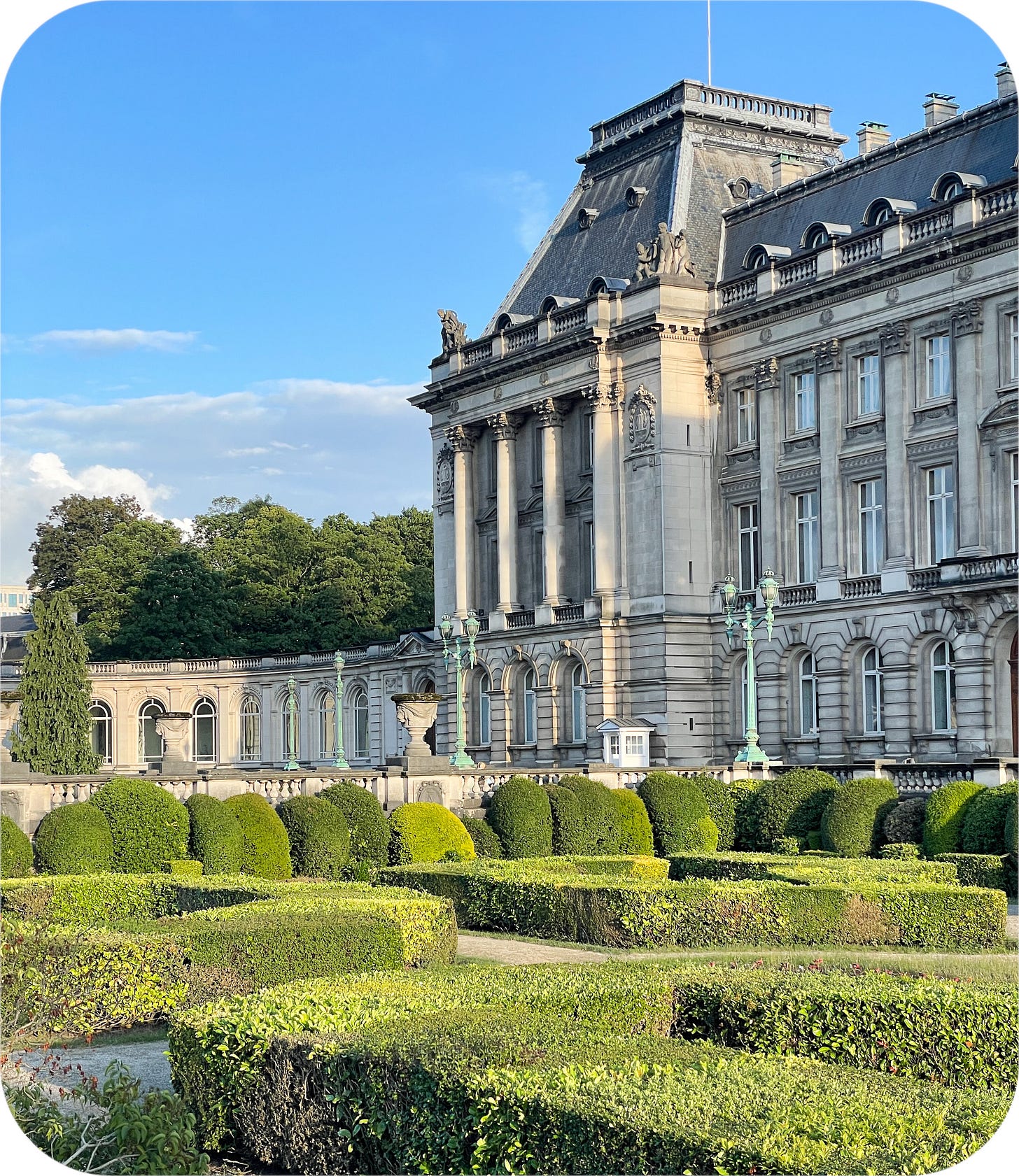


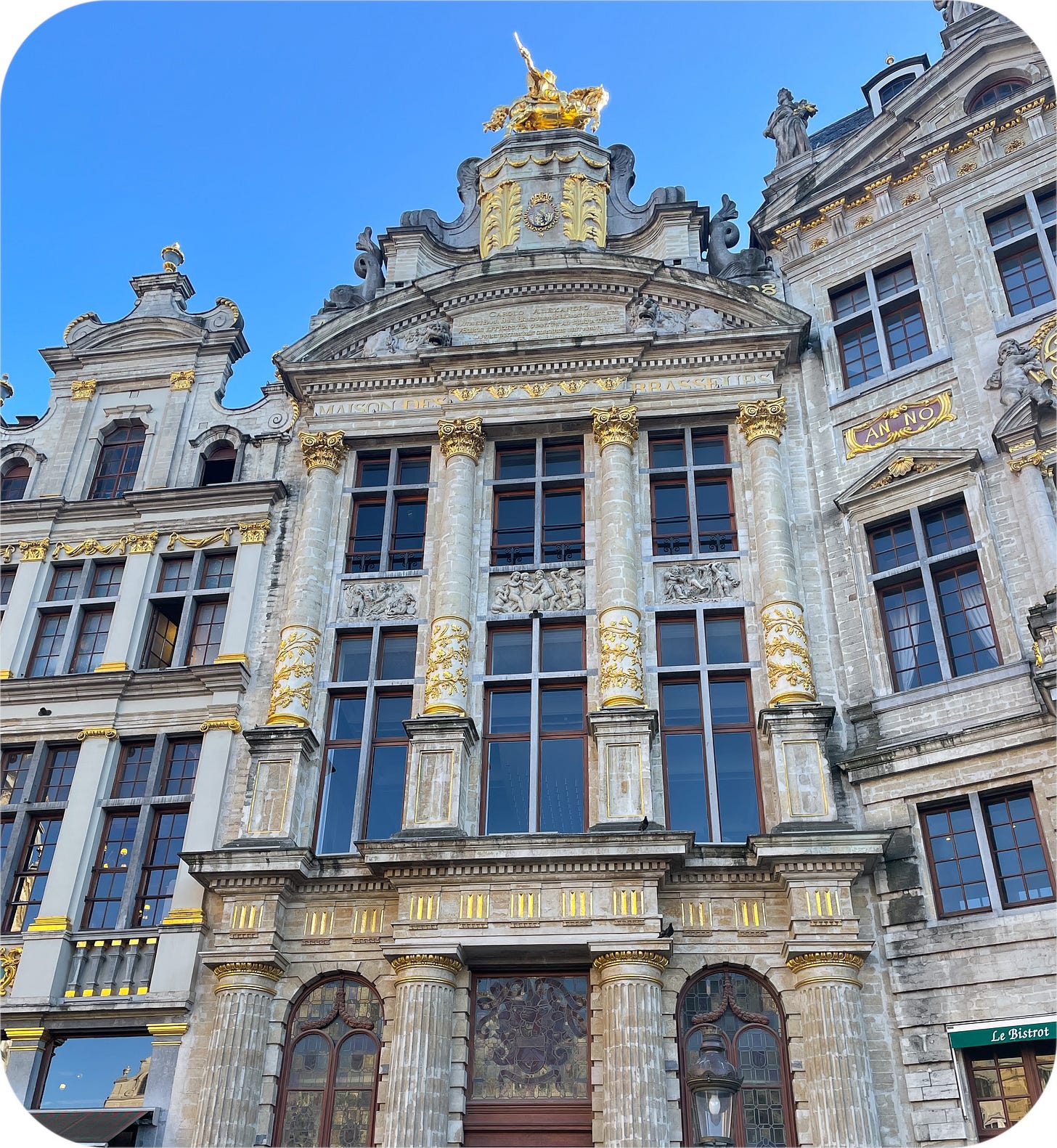
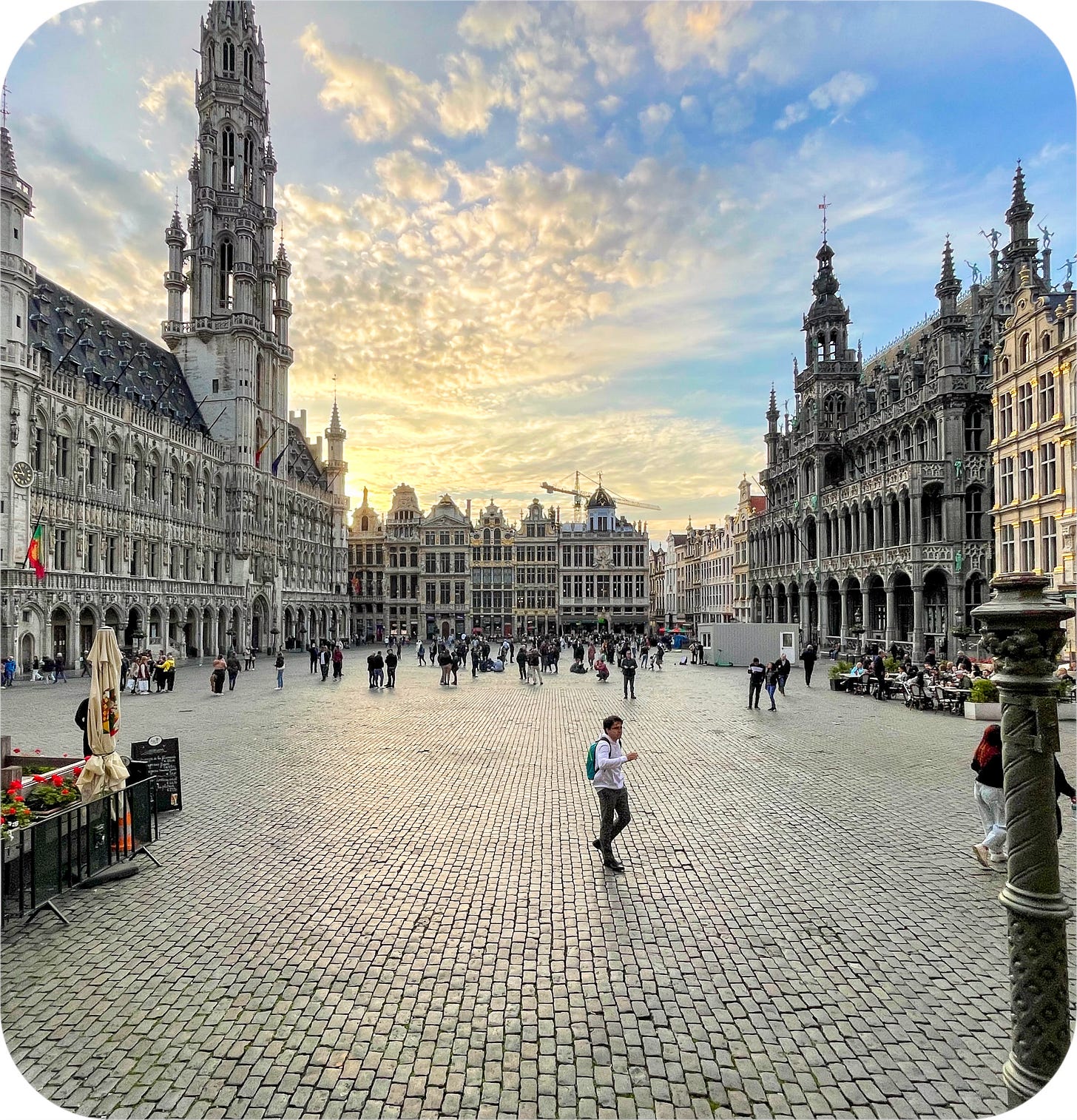
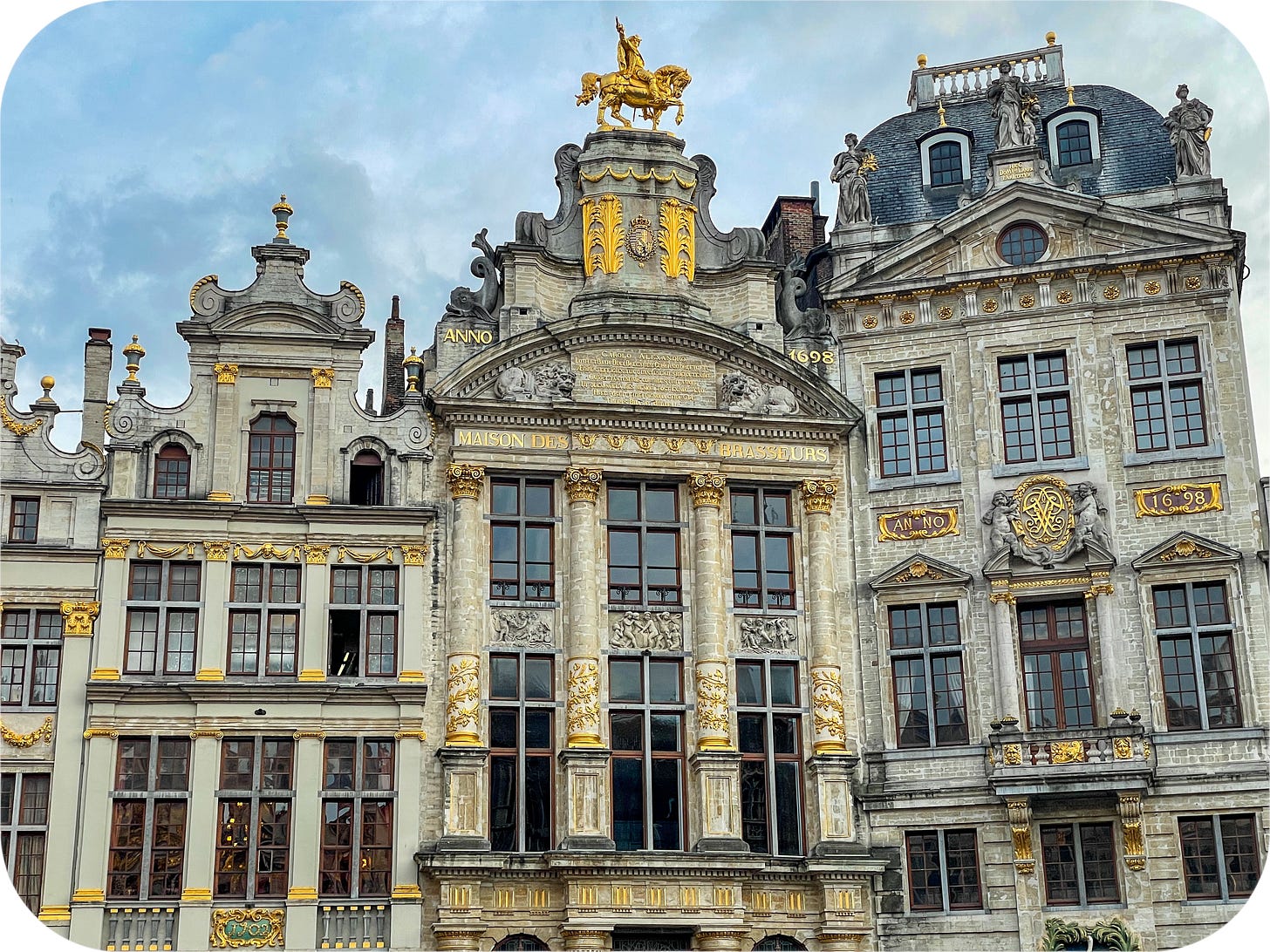
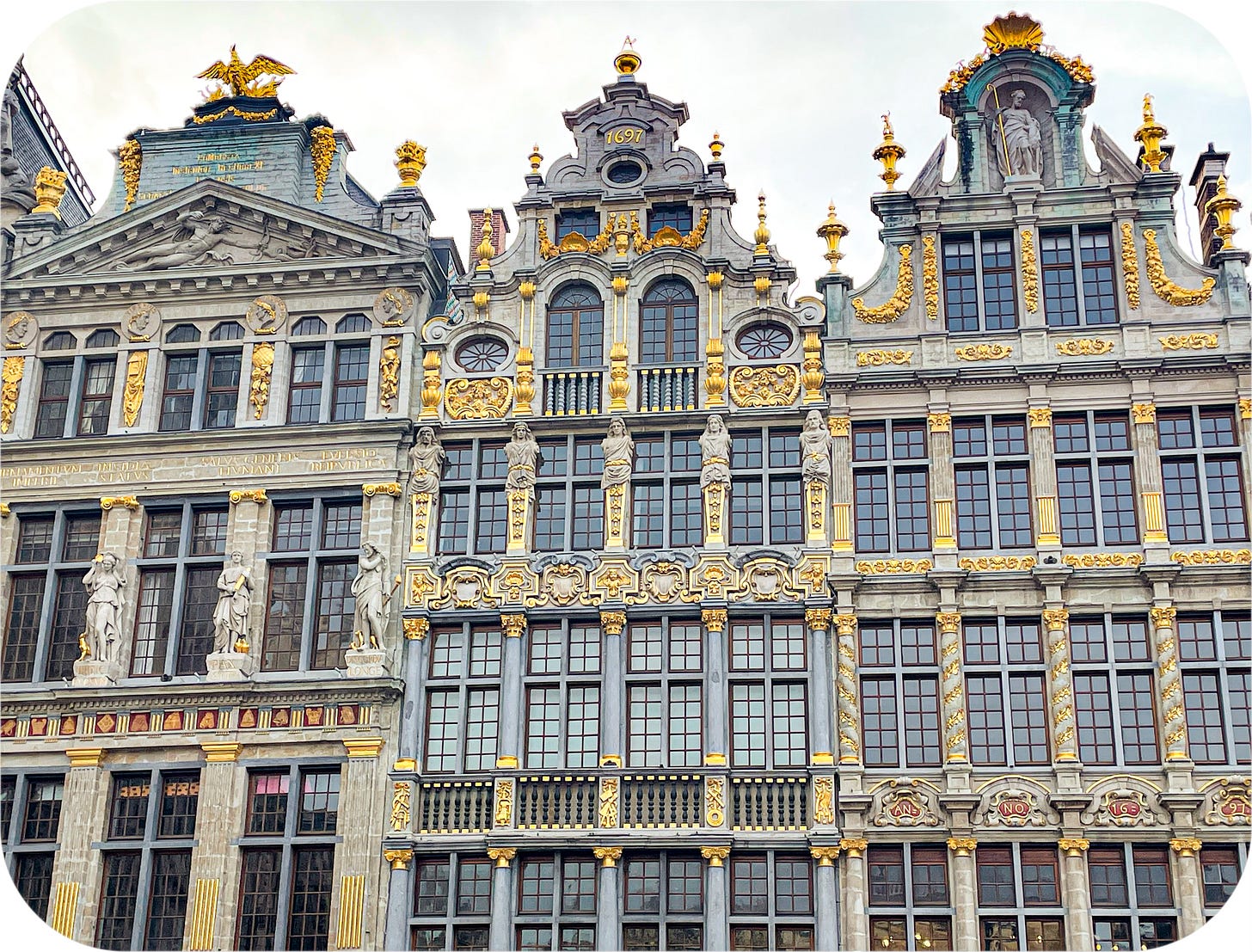
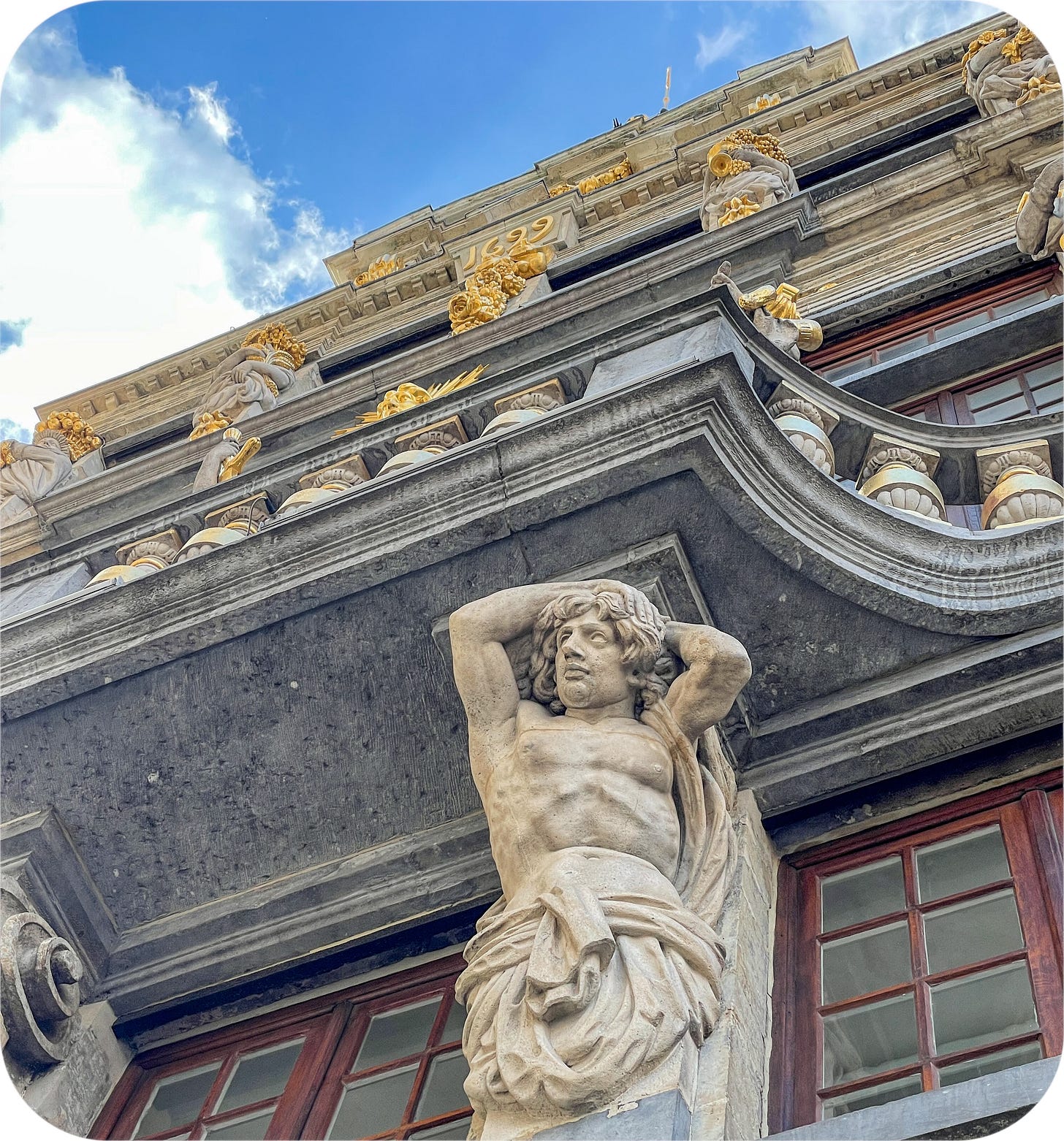
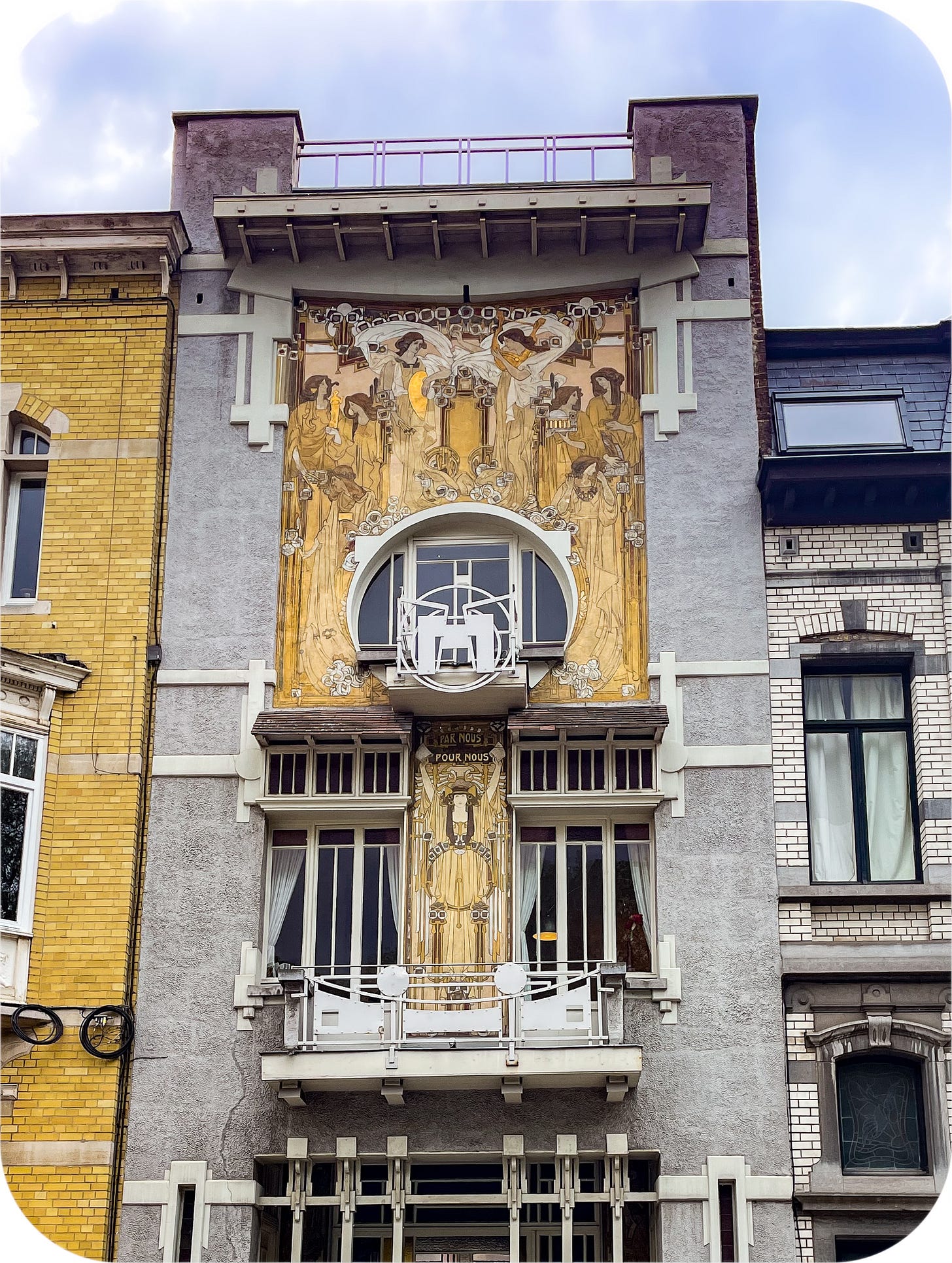
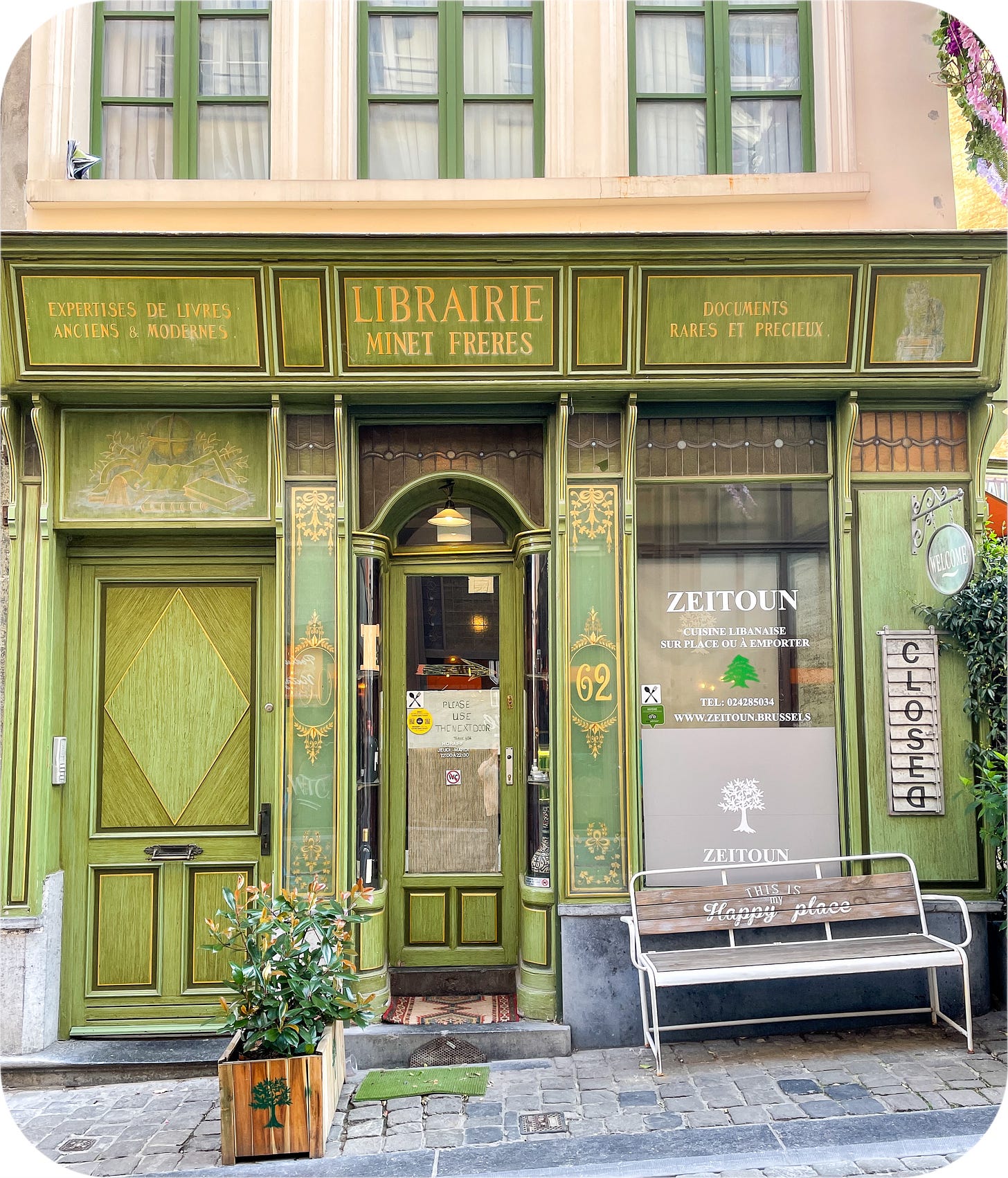
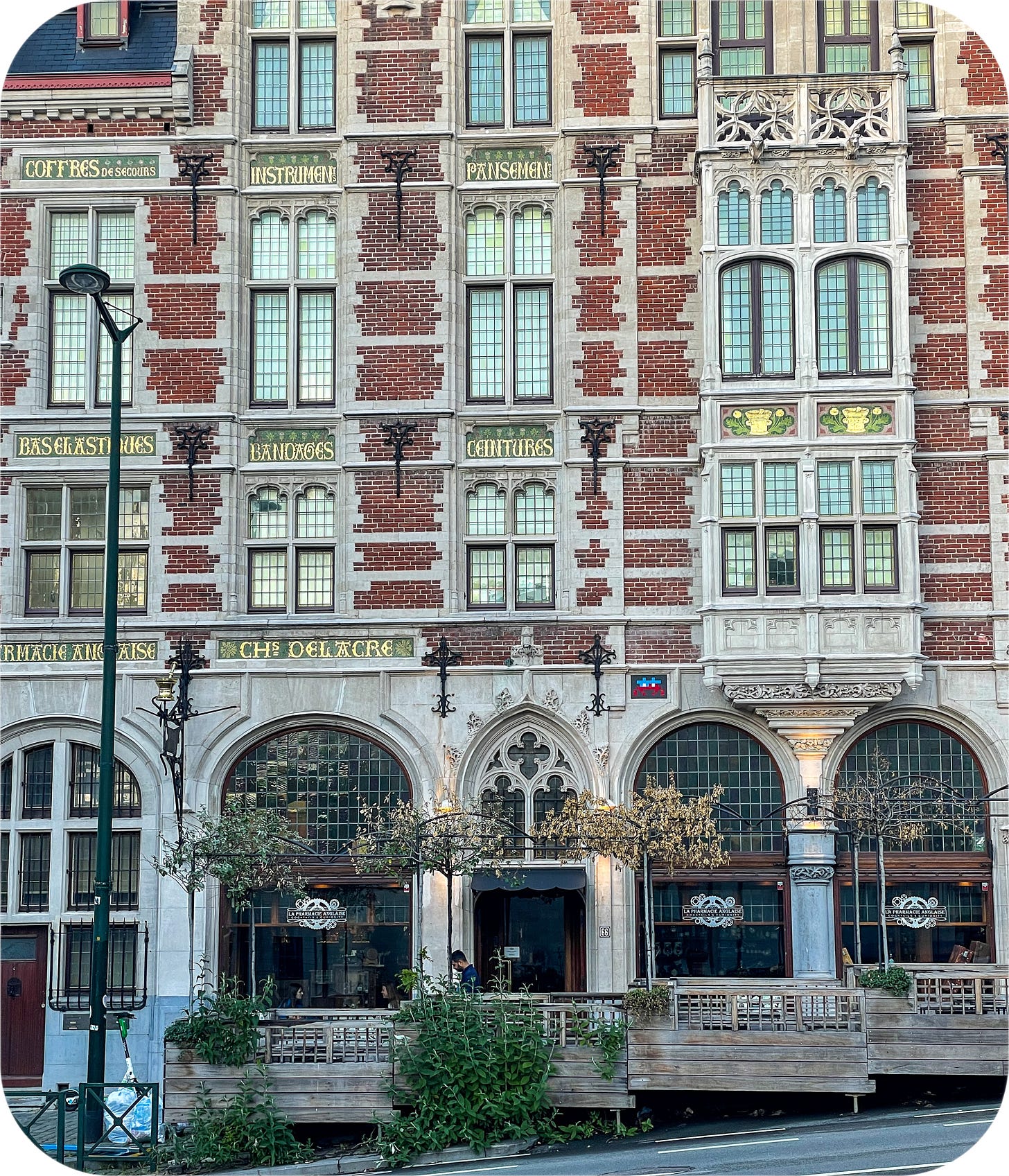
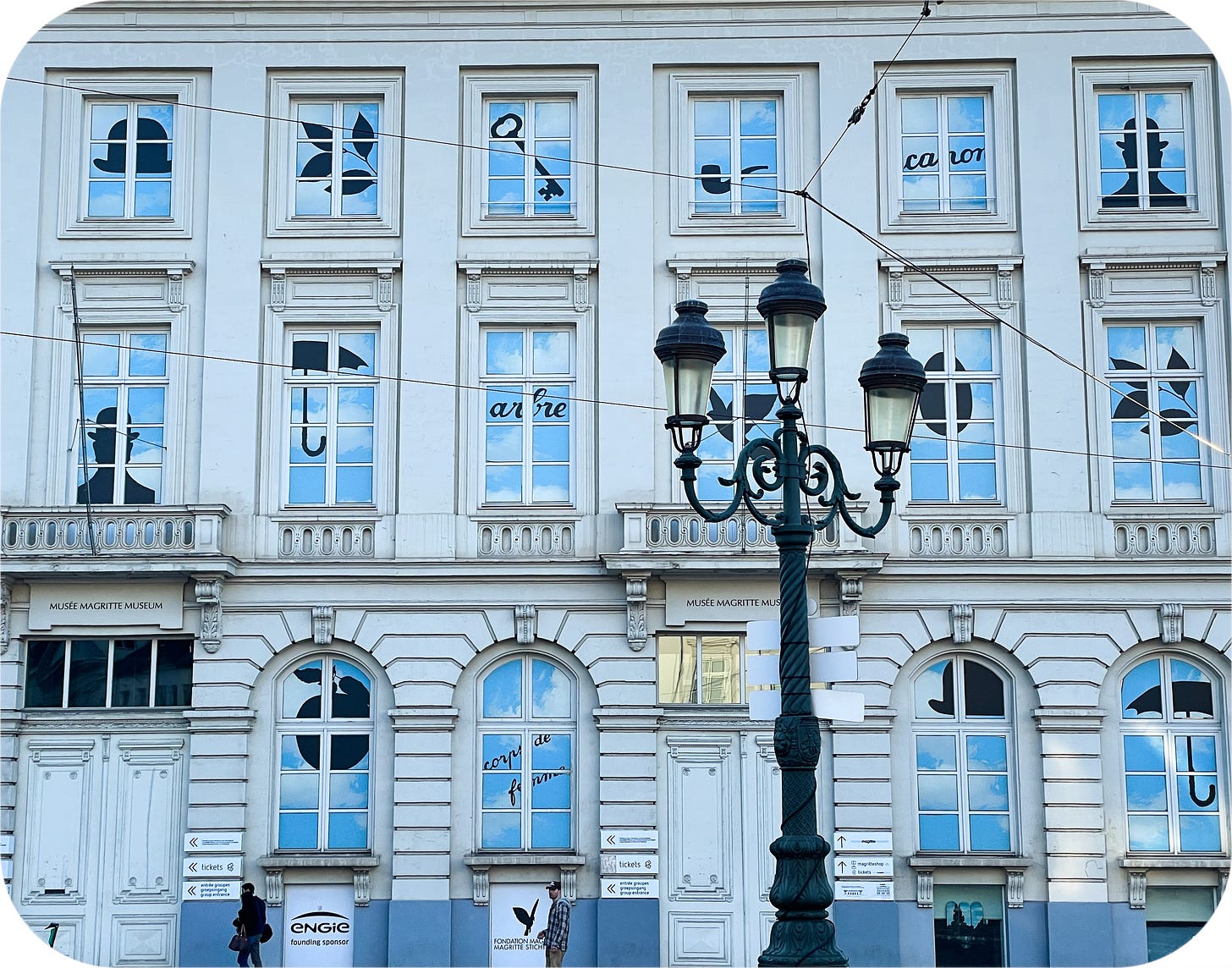

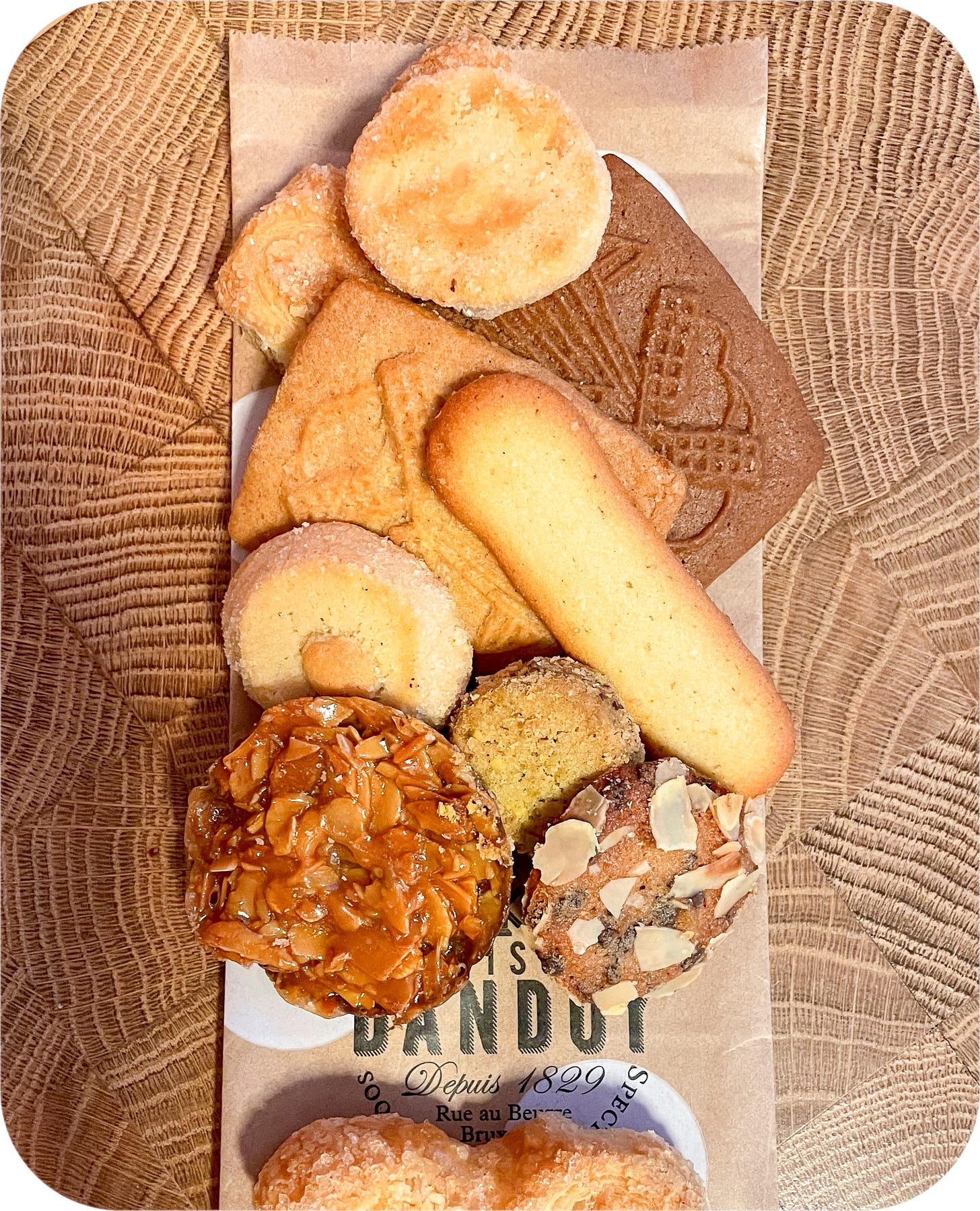
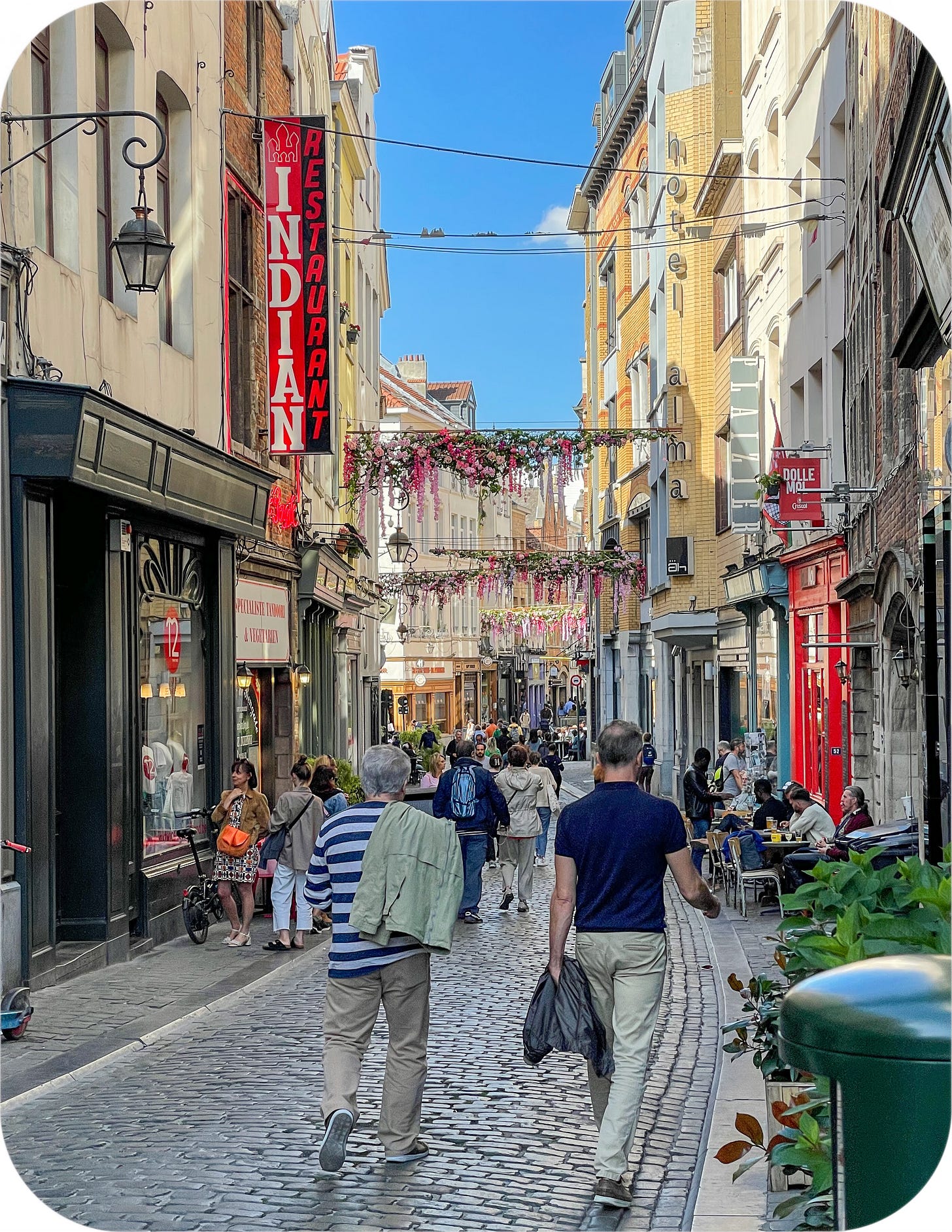
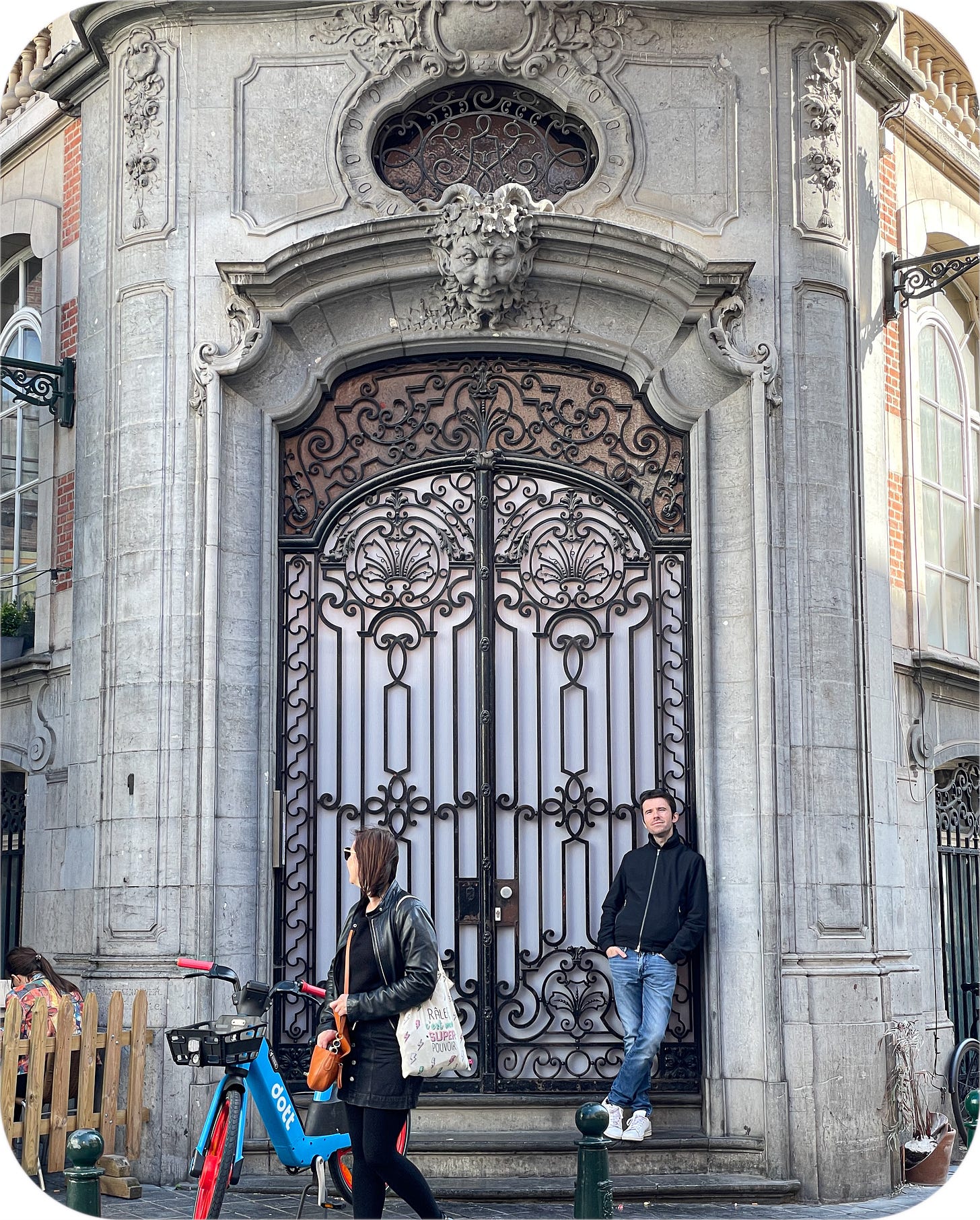

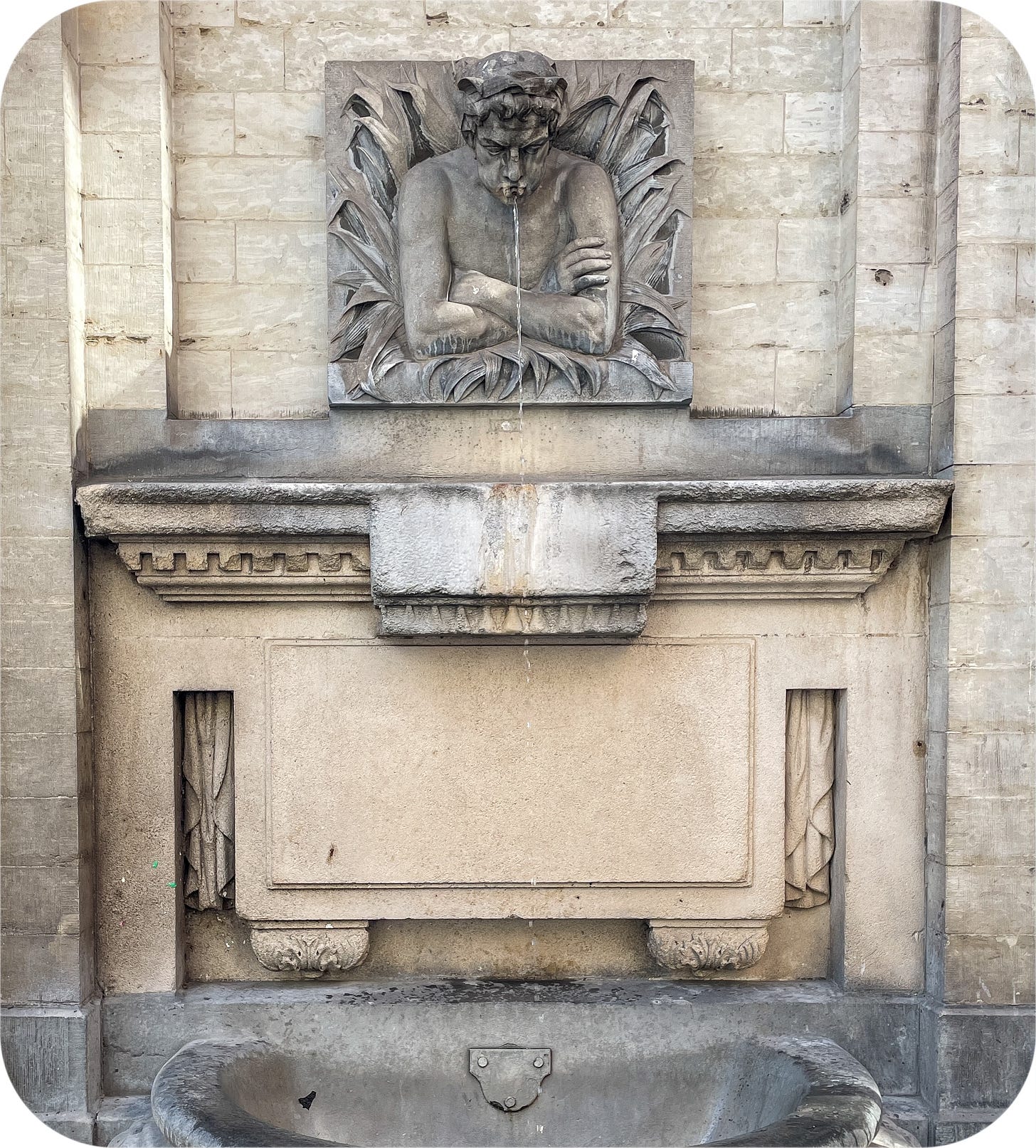
So glad to have you and your wonderful writing back! And yes, train strikes— I spent hours stalled on an unheated train in Belgium during a train strike in the winter of 1984. I was just passing through and never saw the city except from the windows, eventually. It was memorable though. 😁
I agree with you on the contrast between the Grand Place and the surrounding buildings. To me, Brussels was underwhelming compared to western cities. But Grand Place is unique and like some other Brussels.